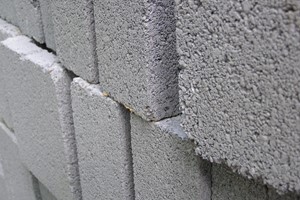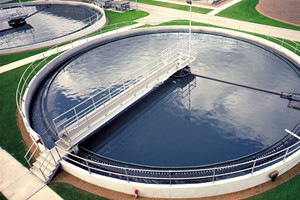In the face of escalating global temperatures and rising greenhouse gas emissions, carbon capture has become paramount in the battle against climate change.
Researchers from the University of Tokyo and Nagoya University in Japan have unveiled a groundbreaking method to confirm the origin of carbon within concrete, shedding light on its potential as a carbon capture agent. This innovative technique, as published in the Journal of Advanced Concrete Technology, offers promising prospects for industries and nations striving to mitigate their carbon footprint.
The Increasing Need for Carbon Capture
The year 2023 is on track to shatter temperature records, with Japan witnessing wilting rice crops and the United States grappling with roads that seem to melt under the relentless heat.
Despite international agreements and the clarion call for action, emissions from fossil fuels persistently surge. To avert the catastrophic consequences of 2 degrees Celsius temperature rise by 2100, as outlined in the United Nations’ Intergovernmental Panel on Climate Change (IPCC) projections, a more proactive approach is imperative.
The IPCC underscores the necessity of not only reducing emissions but also actively removing carbon dioxide from the atmosphere to meet climate targets. Direct air capture (DAC) technology emerges as a critical player in this pursuit, offering a means to extract carbon dioxide directly from the air. The International Energy Agency has incorporated DAC into its net-zero emissions scenario, aimed at enabling the global energy sector to balance carbon dioxide emissions by 2050.
Cement’s Environmental Footprint
Industry emissions have significantly contributed to the carbon crisis, with a quarter of global energy system CO2 emissions attributed to the industrial sector in 2022.
Cement production, ranking second only to water as the most widely used industrial product, carries a substantial environmental burden. Producing a ton of cement emits up to 800 kilograms of carbon dioxide, underscoring the urgency of emission reduction in the concrete industry.
Professor Ippei Maruyama, from the Department of Architecture at the University of Tokyo Graduate School of Engineering, highlights the intricate relationship between concrete and carbon dioxide. Concrete has long been recognized for its propensity to react with atmospheric carbon, forming calcium carbonate — a process known to induce corrosion in steel structures within concrete. However, recent considerations in the concrete industry explore the potential of harnessing this reaction for carbon capture.
The challenge arises in distinguishing whether the carbon detected in concrete originates from atmospheric capture or is inherent in the raw materials used, such as rocks containing calcium carbonate, like limestone. To address this dilemma, the research team devised a method to validate the origin of carbon in concrete, a crucial step in certifying concrete as an effective carbon offsetting agent.
Unveiling the Method: From Lab to Real-World Applications
Researchers replicated concrete by creating hydrated cement paste samples. After adequate hydration, they divided the paste into two portions — exposed and non-exposed to the air.
Following seven and 28 days, they dissolved the paste into acid to collect gas samples. The team then employed accelerator mass spectrometry to analyze the ratios of carbon isotopes, specifically carbon-12, carbon-13, and carbon-14. These ratios provided insights into the carbon source, whether from the ambient air or inherent in the raw materials, as carbon isotope ratios mirror the atmospheric proportions at the time of gas sealing.
The next frontier for this research involves applying the lab-based method to real-world concrete production sites. Researchers aim to explore how variations in raw material quantities in local concrete production may influence results, paving the way for practical implementation.
Aiding Emissions Trading and Cementing a Greener Future
Professor Maruyama emphasizes the economic significance of air-based carbon capture, which can be certified as an offsetting measure in emissions trading. In contrast, extracting calcium carbonate from rocks for use in concrete lacks this distinction. The research findings serve as a critical tool to bolster a sustainable market for carbon neutrality and a circular economy in the construction industry.
In a world where the construction industry plays a pivotal role in Japan’s business continuity and recovery from natural disasters, embracing carbon neutrality and a circular economy is imperative. The innovative method developed by these Japanese researchers presents a tangible pathway to harnessing concrete as a powerful carbon capture solution and propelling our collective efforts toward a more sustainable future.












